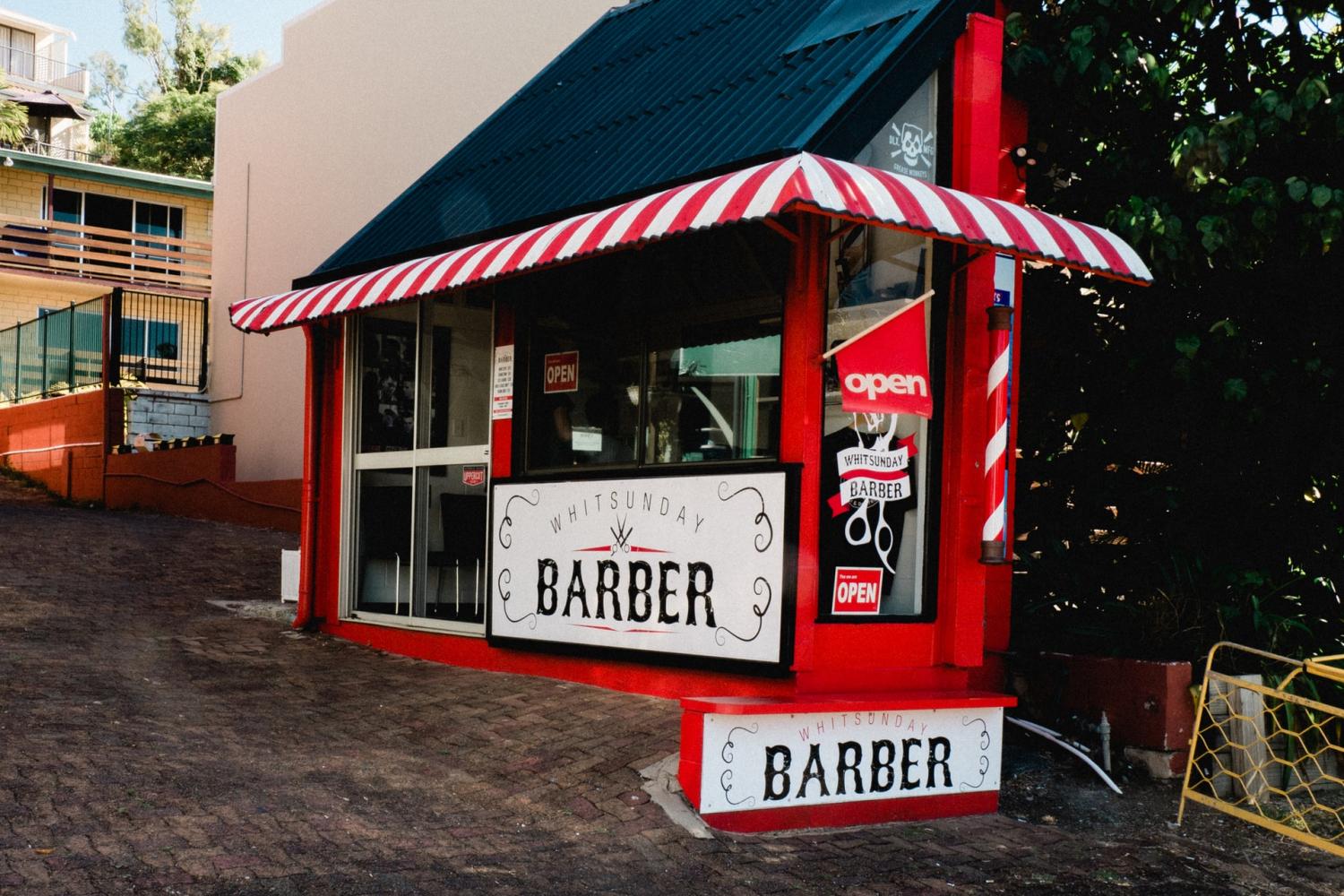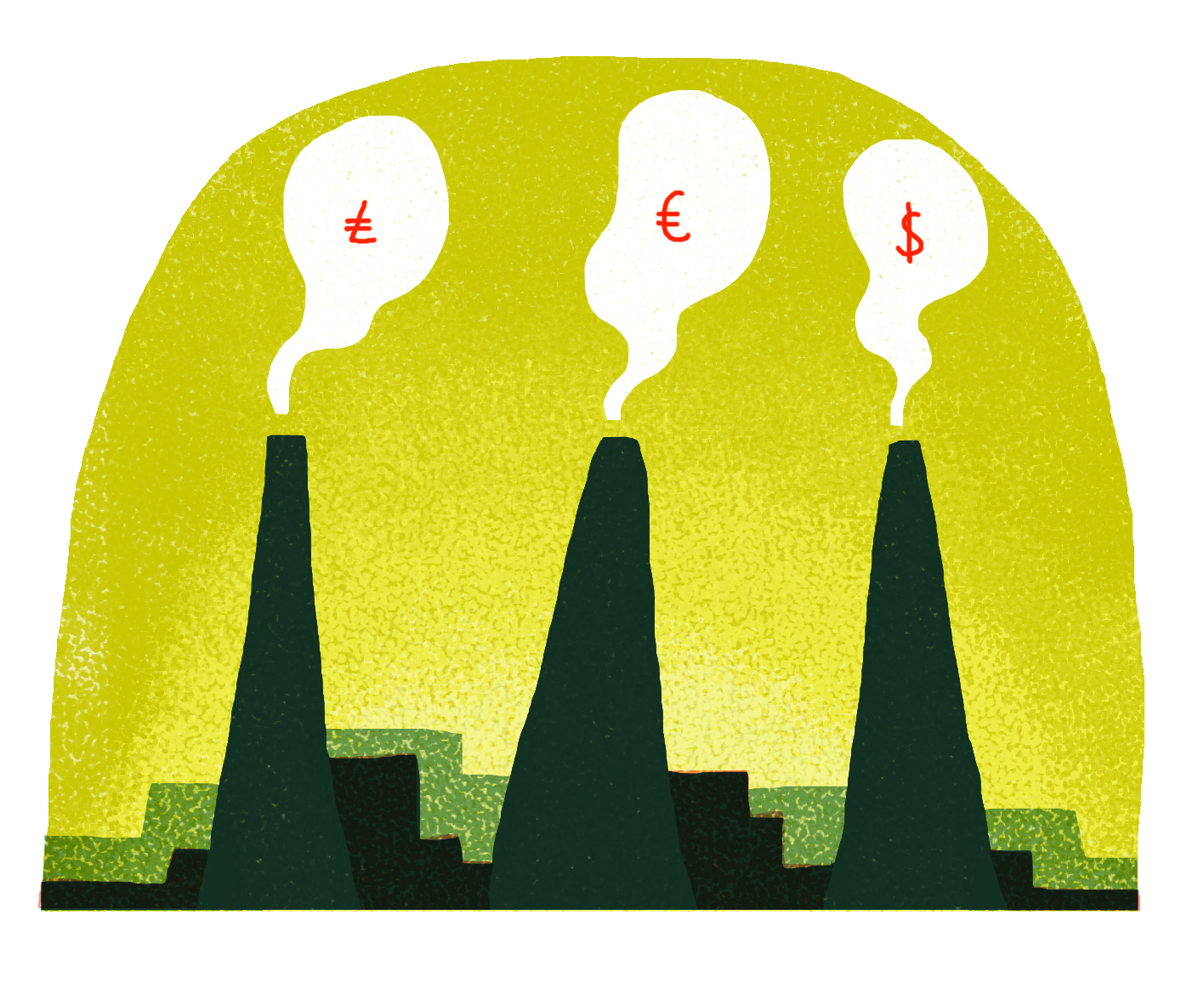New BP CEO Identifies the Devastating Problem for the Fossil Fuel Sector (Spoiler Alert: Her Name is Jo)


Now that the up-and-coming generation of workers is fully aware of the forces behind climate change, leading fossil fuel companies are faced with a catastrophic loss of talent. After all, who wants to work for a business that is all but guaranteeing destruction of the planet as we know it? Some of these companies may be already beyond saving, but others are stepping up to address current and future employee concerns, including the global oil giant BP.
After false start, BP pivots to renewable energy
BP has come a long way since 2010, when its leadership was exemplified by then-CEO Tony Hayward. His infamous “I’d like to have my life back” quip followed months of other insensitive comments during the catastrophic Deepwater Horizon oil spill in the Gulf of Mexico.
Adding to the hurt, the Deepwater disaster blew the green sheen off BP’s “Beyond Petroleum” public relations campaign. The campaign was already notorious for greenwashing, mainly because it launched in 2000, when no way to get “beyond petroleum” actually existed.
At the time, wind and solar power were still expensive technologies with limited commercial application, and General Motors was the only auto manufacturer making electric vehicles for the public. GM began producing its ill-fated EV-1 car for lease in 1996, but almost nobody was interested. A mere 1,100 rolled off the assembly line and GM clawed back all but a handful by 2001.
Everything has changed since then. Wind and solar power are coming into competition with fossil fuels, energy storage costs have dropped, millions of electric vehicles are set to hit the road in the coming years, and green hydrogen is providing a pathway for decarbonizing heavy industry.
BP has been among the legacy fossil companies to realize how rapidly the global energy landscape is shifting. In 2017 the company took a dramatic step in the right direction when it acquired a $200 million stake in the leading solar company Lightsource.
BP also continued to grow its oil and gas business, but in the meantime it began investing in electric vehicle charging and other clean technologies.
This past spring, BP announced a flurry of clean tech moves including a major new green hydrogen project in Australia, and an onshore wind farm in the U.S. The company also announced the sale of almost all of its petrochemical assets.
The people problem at the heart of the fossil fuel problem
These moves are all well and good, but BP’s continued footprint in the fossil fuel economy has hampered its efforts to attract and retain talent.
That appears to be changing. On May 27, BP’s new CEO, Bernard Looney, made his first appearance at a BP annual general meeting, and he chose to highlight the talent issue.
“Last year – when we met in Aberdeen – we heard from a shareholder called Jo Alexander,” Looney recounted. “Jo used to work for BP – for 10 years – but left 5 years ago. She said she felt – at the time – that bp’s corporate purpose was not consistent with her inner purpose.”
On a second meeting with Looney, Ms. Alexander agreed to re-join the company.
Her decision to re-join marks a significant change for BP. When she left the company, she did not simply leave. She went to work with the U.K. responsible investment charity ShareAction and the professional group On Purpose.
For her On Purpose profile, Alexander wrote that she enjoyed her time at BP, but her role at the company was “at odds with her passion for the planet, our need to reduce carbon emissions and the impacts of climate change.”
In 2018 Alexander co-authored a Union of Concerned Scientists blog post titled, “BP’s Hypocrisy on Climate Policy,” in which the lead author Kathy Mulvey excoriated the company for its aggressive campaigns against climate action legislation in California and Washington State, even as it purported to support the 2015 Paris Agreement on climate change.
As for her new position at BP, Alexander’s LinkedIn profile makes it clear that she intends to have a broad impact.
“I am leading the development of an integrated plan for BP to engage its 73,000 employees about purpose,” she writes. “That will start with meaningful dialogue. I will create an environment where staff can do work that is meaningful to them and delivers BP's ambitions.”
Expect to see more Jo’s at BP
The big question is whether or not BP intends to follow through. Looney provided part of that answer last week, when he told Daniel Leal-Olivas at The Times that the company needed to take employee concerns to heart.
“Oil is increasingly becoming socially challenged, there’s no question about that,” Looney said. “I would talk about the people we’ve hired into BP in the past six months that we would have struggled to hire had we not [changed direction].”
Last week Fortune also took a deep dive into Looney’s newly unveiled decarbonization plan for BP. The new plan lends more detail to Looney’s previously announced pledge that BP would become a net zero company by 2050.
The new plan also lends more credibility to the sale of BP’s petrochemical assets, as it involves cutting oil and gas production by 40 percent within the next 10 years, toward a goal of 75 percent less than the company’s peak.
“The sense that investors were really beginning to push, and question our purpose, started to weigh on the financial performance of our sector,” Looney told Fortune. “And our employees were becoming anxious about what I would describe as their personal purpose being misaligned with our corporate purpose.”
What Big Tech can learn from Big Oil
BP still has a long way to go, but its focus on employee values could provide it with an edge over other competitors as the global economy decarbonizes.
Other sectors would do well to follow BP’s lead. In the tech sector, for example, employees are speaking out on issues of profound social concern, including the pandemic, and the reaction has been mixed.
That includes Amazon, which continues to provide cloud services to oil and gas companies despite repeated entreaties from employees to support its own climate plan with meaningful action.
On civil rights, employees at Google and Microsoft have raised alarms over the use of facial recognition technology and other algorithms by immigration officials and law enforcement agencies.
The threat of a brain drain also has tech firms and other companies scrambling to address other potential hot spots, from privacy issues to LGBTQ rights.
As generational attitudes shift toward environmental action, human rights and civil rights, corporate leaders will have to continue to adjust to a new reality.
Be sure to sign up for the weekly Brands Taking Stands newsletter, which arrives in your inbox every Wednesday.
Image credit: Adzim Musa/Unsplash
Returning to the Office During COVID-19 Isn’t an Epic Idea, Say These Employees


Epic Systems is a privately-held company that provides electronic medical records software to the healthcare sector. As Epic has no mandate to report its financials publicly, let’s not assume how it’s currently performing; however, it’s safe to believe that the $3 billion healthcare tech company employing about 9,000 people is holding its own during the COVID-19 era. Epic’s success since its founding over 40 years ago has certainly allowed it to spend some serious coin on a beautifully designed headquarters that puts most pallid office parks to shame.
Earlier this month, the Wisconsin-based company announced that it would require its entire workforce to return to the office by September 21. Employees with a higher health risk have until November to forgo working from home.
Come back to the Epic office, management said
The irony of a company linked to the healthcare industry telling its workforce to return to the office wasn’t lost on many employees, and doubts over the wisdom of going back during the ongoing COVID-19 crisis quickly accelerated.
“Employee dissatisfaction has manifested in more than complaints,” wrote Alice Herman, a journalist based in the Madison area. “It has also cracked open an opportunity for collective action in the Madison area’s biggest, most ostentatiously anti-labor private employer.”
An internal survey leaked to CBS News found that employee concerns were not merely those of the noisy few, but rather reflected hundreds of employees who worried about the risk of returning to the company’s main campus when COVID-19 still looms as a public health threat.
Epic’s leaders said reopening the campus was important for both company culture and being able to serve its customers. “The fact is we can’t do what we do without being together at the absolute highest level,” Sverre Roang, the company’s chief administrative officer, told Anna Werner of CBS News.
Employees, however, said not so fast
When asked about the results of an employee survey that described Epic’s plans as “wildly irresponsible,” a “disaster,” “rushed,” “unnecessary” and even “shameful,” Roang claimed he did not recall such descriptions — and Werner, to her credit, kept pressing him, as she wasn’t having it; and neither were many of the company’s employees.
The company insisted it was taking whatever measures possible to boost safety at its campus – one that is whimsical in design, from the “Intergalactic Headquarters” sign greeting visitors at the entrance to the various design themes across the offices that give off a theme park vibe.
But Epic employees weren’t shy about speaking to the local media to share their feelings about returning to the office – especially in the greater Madison and Dane County area, which is currently having its own struggles containing the virus. Data also suggest 40 percent of Wisconsin’s COVID-19 cases can be traced to a workplace, adding even more urgency. Epic reportedly had 4,000 employees who continued to work at its suburban Madison campus. That critical mass was on the mind of more than a few employees, one of whom told Werner, “I don’t want us to be the next epicenter of the next breakout.”
It’s not a collaboration-versus-COVID-19 question, say public health experts
Public health experts have questioned any rushed return to the office by Epic or any company for that matter. “Just because you can go back into the office, doesn’t mean you should go back into the office,” Dr. Anne Rimoin, an epidemiology professor at UCLA, told CBS News. “To forfeit safety for the idea of having ‘collaborative moments’ is something I can’t agree with.”
Tech companies including Google and Workday have certainly taken public health officials’ concerns, and that of their employees, to heart as they have either delayed a return to the office until next year — or, in the case of Twitter, deciding to make work-from-home policies indefinite.
Over the last several days, Epic’s executive team continued to backtrack on its original directive. On Saturday, the company reportedly sent an email saying employees would not have to return to the office if they felt uncomfortable in such an environment.
By Monday, it was widely reported that Epic has backed off its complete reopening plans for the time being. The saga offers lessons to companies that seek a return to the office, but are unsure how to communicate such a plan.
The notion “employee engagement” is now undergoing a transformation, but the timeless lessons of how to engage employees remain fundamentally the same. Trust them; listen to them; work with them; assume nothing.
The alternative risks a blot on a company’s reputation while its executives and communications team knot themselves into a pretzel explaining the company’s point of view. And as we all have learned, if one side is forced into a position of explaining, the truth is: That side loses.
Be sure to sign up for the weekly Brands Taking Stands newsletter, which arrives in your inbox every Wednesday.
Image credit: Pixabay
Can the 15-Minute City Inspire Renewal for Businesses and Communities Alike?


Photo: A small barber shop attached to a commercial building in a northeastern Australia coastal town. Small storefronts like this are one part of the vision advocated by supporters of the 15-minute city.
American cities certainly look different these days. Quarantine has kept people inside, most only leaving their homes for essential activities like grocery shopping. Many small businesses have struggled with diminished economic activity. Even with a phased reopening in some cities, car and foot traffic are slower. A third of small businesses in New York City, as one example, may not reopen after the pandemic calms, a report from the business group Partnership for New York City found.
One problem businesses (and patrons) now find in some American cities is the great physical distance between commercial centers and the residential areas where millions spend their days, foregoing their commute to the office and working from home. This change in behavior may not be entirely temporary either. Companies like Twitter have already told employees they will be able to work remotely even after offices reopen.
An urban planning concept called the “15-minute city” is gaining foothold as a viable solution to pandemic woes. C40 Cities, a global network of cities combatting climate change, included the idea in its 2020 C40 Mayors’ Agenda for a Green and Just Recovery. At a time when city centers are desolate, bringing activity to the people and decentralizing commerce would benefit both the communities craving amenities and the small businesses struggling to survive.
In a 15-minute city, residents would be able to take a short walk or bike ride to school, work, shops, governmental services and parks. The benefits would extend to communities, ecosystems, businesses and the economy. Los Angeles, New York and San Francisco are among 17 active North American members of C40 Cities.
Work, school and shopping are all part of a 15-minute city
The idea of localized, walkable living is not new. Activists in the 1960s, including Jane Jacobs, pushed for community-based planning, and more recent movements like New Urbanism tout the benefits of small-scale, pedestrian-centric city living. The 15-minute city, though based on time-honored principles, is an incarnation that meets the needs of the time. Coined by Paris-based urbanist Carlos Moreno, this approach localizes living, shifts the transportation paradigm, and ensures that communities and ecosystems are cared for.
Paris has already taken this decentralization to heart under Mayor Anne Hidalgo, who published a proposal this spring for a “15-minute Paris.” The vision is for a more equitable, prosperous and environmentally-friendly city.
Yes, in a way, the 15-minute city claims to be a universal panacea, but not without great thought and effort. American cities that have been split by highways and freeways and spread across landscapes with swaths of suburbia will have to retrofit their neighborhoods meticulously.
How businesses can begin thinking small right now
There are humble places to start. In this pandemic, where a third of small business owners have had to tap into their personal funds, relocating shops can make a big difference. One strategy is repurposing and building accessory commercial units (ACUs) within residential neighborhoods.
The ACU — a concept from Portland, Oregon, urban planner Neil Heller — is a small commercial unit that can sit in someone’s front yard facing the street. Some homes already have a small unit in the front from a century ago before cars became more widespread. If they don’t, these modest structures aren’t hard to build.
Mixing commercial and residential uses may require tweaks to zoning, especially in exclusively residential areas, Heller told Fast Company. But he says ACUs are a viable solution for many businesses, including shops and cafes that relied on commuters and office-workers before the pandemic sprung up. These businesses can relocate to the communities where people are working remotely.
Smaller units away from city centers and commercial hubs may also require lower rent.
Thinking small makes sense in a distanced world
Not everyone will want to open shop on a quiet residential street, but businesses like tailors, hair dressers, and insurance offices would fit well and find a new clientele, Heller wrote in a recent blog.
We’ve already watched cities adapt quickly to these times by opening streets to pedestrians, bikes and restaurant seating, but much of this change has happened in the urban core where landmarks, commerce and recreation are already centralized. In a time of social distancing, it makes sense to turn our attention to the outlying neighborhoods where people are congregating.
This is the time to make our cities livable and equitable. Where there are food deserts, markets can enter. Where a home is miles from any amenity, small businesses can swoop in. These first steps can be simple. The result will benefit all.
Image credit: Nicolas Weldingh/Unsplash
Decarbonization In the Age of Coronavirus


Amidst all the negative news about the COVID-19 pandemic, there is also a silver lining – as in the potential for decarbonization. A recent analysis published in the journal Nature shows that CO2 emissions decreased daily by 17 percent by April 2020 relative to the mean emissions of 2019.
For the first time since the financial crisis in 2010, global CO2 levels have gone down, yet can we see what a sustainable future could look like?
Not really. 2019 emissions are at a similar level to 2015 emissions, and World Meteorological Organization experts predict that there might even be a boost in emissions when business gets back on track. There are also severe social consequences to stunted economic growth, including job and income losses.
It is becoming clear that the current situation is not a model for a climate strategy that is sustainable in the long run. Companies must come up with feasible and sustainable provisions to ensure successful decarbonization. The following provides examples from diverse international companies collected via the Sustainable Business Roundtable, a peer-to-peer learning network founded by ESMT Berlin.
Value your emissions
Understanding the business case for decarbonization comes first. This can be done by valuing different scopes of emissions in the company value chain (from direct emissions from controlled sources, through indirect emissions from the consumption of purchased energy to all other indirect emissions occurring).
Accenture, one of the first companies from the service industry to introduce Science-Based Targets, focused on exactly that and discovered that Scope 3 emissions (indirect emissions occurring in the company value chain) make up the biggest share of total emissions, about 75 to 85 percent on average. For some companies, like car manufacturers, they constitute an even larger share.
At Volkswagen, where Scope 3 emissions constitute 98 percent of the company's total lifecycle emissions, only 2 percent come from production in its factories. Thus, for Volkswagen, decarbonization is about more than the production of electric cars, namely climate-neutral mobility – from the supply chain and production to green charging electricity and recycling.
Three further examples of companies that have already found ways to reduce their carbon footprint give a glimpse of which corporate strategies for decarbonization are needed.
Climate-savvy via carbon pricing
The German manufacturing company Siemens introduced a “carbon fee” on emissions from operations at some of its sites. The idea was to put a price on carbon emission to make people feel the impact the company's behavior had on the climate. The internal carbon pricing also ensured commitment to the company's 2030 carbon neutrality commitment.
Siemens U.K. charged businesses a fee of $17 per ton of CO2 and re-invested the collected funds into energy-efficiency projects at its sites. Employees were asked to suggest their own energy-efficiency projects and, out of the 70 ideas, five were chosen by a panel of internal and external experts.

Assessing the ideas in a “Shark Tank” style ensured employee engagement as well as entertainment. It also meant that there was a considerable surge in innovations from within the company. Once the carbon fee was established, administrative efforts were kept at a minimum by using existing processes to collect the fees. Sustainability managers regularly informed the CEOs and put the fee as an item on board meeting agendas to ensure that management stuck to its resolutions in the long run. Ultimately, internal carbon pricing internalizes arising risks and opportunities in today’s business decisions.
Another step in decarbonization: Decouple growth from emissions
A different example on how to successfully reduce carbonization is the Swedish furniture giant Ikea. It has pledged to become climate positive by 2030 “by reducing more greenhouse gas emissions than the Ikea value chain emits while growing the Ikea business." Currently, the company emits 24.9 million tons of CO2. The largest impact here is the production of materials and the product use at home, as well as customer travels and home deliveries. In order to decarbonize, Ikea will promote sustainable consumption and a circular business, strive toward 100 percent renewable energies, and use more sustainable materials and food. This will be achieved by generating renewable energy onsite as well as off-site (by building wind parks).
The retailer will furthermore increase renewable energy for customer and co-worker transportation and improve overall energy efficiency on its sites. Overall, this is estimated to reduce GHG emissions by at least 15 percent in absolute terms by 2030 compared to 2016. In addition to the reduction of GHG emissions, Ikea has pledged to increase carbon storing in land, plants, and products by improving its management practices in forestry and agriculture.
Becoming carbon neutral is not enough
By far the most ambitious decarbonization strategy was announced by Microsoft in January 2020. Its aim is to be “carbon negative” by 2030 and to remove its historical carbon emissions (since the founding of the company in 1975) by 2050. Microsoft currently emits about 16 million tons of carbon, mainly through the production of purchased materials, product use, business travel, and contractor owned vehicles.
By disclosing its own carbon footprint, Microsoft officials put pressure on its peers as well as themselves to take responsibility. On top of decreasing the company’s own emissions, it has pledged to support and empower suppliers, enlist its employees to contribute to efforts, and use the company’s voice to advocate for needed changes in laws and regulations, such as more investments and the removal of regulatory barriers. Microsoft has also created a $1 billion climate innovation fund. The company will use it to accelerate the development of technologies for carbon reduction and removal technologies as well as to invest in new innovations through equity and debt capital and support key academics and non-profit efforts through philanthropic grants.

The aforementioned companies have invested time and money to research into its own emissions as well as to come up with viable solutions, be it everyday changes, company level actions, or legal and policy-based improvements. It is safe to say that all of them have had to deal with economic decline due to the current pandemic crisis.
Only time will tell, if and when these companies will reach their suggested goals. The silver lining of travel restrictions and economic slow-down due to the COVID-19 pandemic shows that reduction of GHG emissions is possible, if only to a certain level. Decarbonization requires carbon pricing and innovation. It also demands forward-thinking, inspirational strategies and peer-to-peer pressure of companies.
As increasingly demonstrated by business players, there is no shortage of that.
Illustrations by Beth Walrond; Photo credit: Dimitry Anikin/Unsplash
The Three Biggest Hurdles to a Zero Carbon Economy


Globally, we are at a tipping point when it comes to climate action. There's long been talk about moving toward a zero carbon economy, but it's clear the time to move in that direction is sooner rather than later.
Over the past few years, corporations have committed to emission reductions and to adopt strategies that will drive the broader sustainability transformation — a trend that significantly picked up pace in 2020. However, this widespread effort has not produced the results needed to effectively deter the effects of climate change, as only 28 percent of companies are on track to meet their set goals.
So, what will it take to truly achieve a zero carbon economy? We must first consider the barriers currently holding companies and governments back from creating real change in the present. Outlined below are the three primary challenges to achieving a zero carbon economy and actionable advice for how to overcome them.
Deploying clean energy is one path toward a zero carbon economy
Due to the growing climate movement over the past decade, coupled with the maturation of clean energy supply chains, wind and solar energy costs have been steadily declining since 2009 and can now compete with fossil fuels, according to market data by BloombergNEF. In fact, a recent study found that the cost of generating energy from wind projects has fallen by 4 percent and large solar projects by 7 percent. While this increases the business case for investing in renewables, costs alone are not enough to drive the integration.
Costs to buy renewables are becoming increasingly affordable, with wind energy prices falling by 70 percent and solar energy prices falling by 89 percent over the last decade. However, dispatching the energy after procuring it presents an issue for organizations. Since many local grids are not equipped to store and deploy renewable energy at a consistent and reliable rate, companies would need to invest in upgrading their current infrastructure to rely on renewable sources of energy. This creates a financial burden that many cannot withstand, and deters the timeline of adoption - and in the end, delays the future zero carbon economy.
Purchase power agreements (PPAs) serve as one solution to this issue. By allowing organizations to purchase the renewable energy from a third-party supplier, they don’t need to rely on the local grid. Many large corporations prefer this model, because it allows them to have bold sustainability and renewable energy goals, regardless of the local utilities’ capability to provide power at a consistent rate.
Capturing carbon emissions
For high-emitting industries like oil and gas, switching to renewable energy and alternative heating sources is not a viable option. However, with major players in these industries committing to aggressive climate goals over the past few months, they’ve had to develop alternate strategies to meet their targets.
One alternative method is investing in carbon capture technologies, which remove emissions from the atmosphere after they’ve been omitted. Once captured, the carbon dioxide (Co2) can be stored underground or re-sold. In the past, high costs have deterred widespread integration, but a recent investment may be the catalyst for increased adoption. The Internal Revenue Service released guidance that helps developers take advantage of tax credits for carbon capture systems, which helps make the financial case for capturing carbon more economical.
If the technology is deployed at scale, it will break down the barriers that companies with a reliance on CO2 have faced for decades, and will allow them to contribute to the broader sustainability transformation, eliminating a vast majority of corporate carbon emissions in the process.
Managing waste and resources
While the phrase “reduce, reuse, recycle,” has become widely adopted throughout society, it only scratches the surface of what’s possible through efficiently managing resources. The circular economy is a systemic economic approach to recycling that eliminates the traditional waste model by investing in the reuse of finite resources. This model also has a direct relation to carbon emissions, as it requires less energy to recycle a product than it does to dispose of it.
As the idea of a circular economy becomes more mainstream, companies have begun setting reuse-focused goals. However, BloombergNEF market research shows that, if companies stay on track to meet these goals, there won’t be enough recycling capacity to withstand the demand. In order to change this projection, industries must proactively invest in the circular economy and the necessary resources within the model, like recycling facilities.
Moving close to a zero carbon future
While we don’t currently have all the answers that will bring us to a zero carbon economy, one thing is clear: All facets of business and government must continue to invest in technologies that will help push the movement forward. As shown, there are various options available today to help companies reduce emissions and transform their business models, but those are not the only solutions. As we look towards the future, companies and governments must continue innovating, testing and advocating for clean energy. It will take a persistent, collective effort to overcome the barriers to zero carbon, but the effort will result in a healthier global society and economy.
Image credit: Aziz Acharki/Unsplash
It’s Time the Restaurant Industry Shed This Legacy of Slavery


No one questions the fact that restaurant employees, and owners as well, are suffering greatly due to the chaos COVID-19 has wrought over the past several months. But lost in the backbiting on Capitol Hill over whether we should pay a premium on unemployment benefits, or restore the “three-martini-lunch” deduction, is the fact that the restaurant industry could benefit from structural, financial and legal help during this crisis.
Meanwhile, essential workers including restaurant employees are facing threats of evictions and hunger.
To that end, last week a coalition of dozens of restaurant workers and leading restaurateurs in New York asked the state’s governor, Andrew Cuomo, to deploy his executive authority to push for changes that both benefit and reform the state’s restaurant industry.
A 'Safe and Just Reopening Plan'
The “Safe and Just Reopening Plan” looks out for restaurant owners and workers alike. For restaurateurs, the plan advocates for both tax relief for restaurants and the ability to charge a “safe reopening fee” if restaurants agree to certain health and safety protocols in the era of COVID-19.
For workers, such a plan would allow wait staff to tip out kitchen and other back-end staff and, most importantly, it eliminates the subminimum hourly wage that has long been the norm in most U.S. states.
The federal minimum wage for tipped workers is $2.13 per hour. While actual wages vary from state to state, all workers who receive tips are paid less than the state's minimum wage for other workers. This subminimum wage is a holdover from a long begone era, and its critics say that the federally mandated low hourly wage is part and parcel of the systemic racism endemic across the U.S.
The restaurant industry relies on a relic dating back to slavery
According to historians who focus on the post-Civil War era, the subminimum wage has its origins in slavery. After Emancipation, there was plenty of low-wage labor available to businesses such as restaurants. The hospitality sector was quick to catch onto the idea that hiring Black people to work for tips would be a way to keep labor costs down. At the same time, growing trends in transatlantic travel introduced American travelers to a European custom that appeared sophisticated once U.S. citizens returned to their side of the pond. The problem with the sophisticated veneer of tipping was that what’s now considered etiquette has its origins in racism.
One company notorious for this practice during the later 19th century was the Pullman Company, which hired Black porters to cater to its well-heeled white customers who traveled by train across the U.S.
Fast forward decades later, and coalitions including One Fair Wage insist it’s time to rethink the way in which the restaurant industry pays employees.
The subminimum wage in New York State is higher than the U.S. federal rate ($11.80 versus $2.13), but in this day in age anyone knows the math doesn’t add up to allow for a minimal standard of living. “In New York, tipped workers, still subject to a subminimum wage by law, are more than twice as likely to live in poverty and rely on Medicaid compared to the rest of the state workforce,” says the authors of the group’s most recent report.
Racial inequality is rampant across the restaurant industry
One Fair Wage also says its data show that, nationally, white male tipped workers make about $5 an hour more than their Black women counterparts; in New York City, the discrepancy is $8 an hour. And the gaps aren’t just in wages: The group's research shows that restaurants were twice as likely to hire white workers over people of color. Further, 40 percent of white managers in the restaurant industry demonstrated a clear preference to hire white people over Black people and other people of color.
To date, 50 restaurant owners and at least 200 workers have joined One Fair Wage to support the Safe and Just Reopening plan. Joining them are celebrity chefs David Chang of Momofuku fame, as well as Tom Colicchio and Danny Meyer.
Chang in particular has been vocal about the ravages COVID-19 has heaped on restaurant workers, and emerged as a leader when it comes to showing how restaurants can operate safely during this era. Forced to close some of his restaurants, he co-launched a fund to help employees make ends meet, and he directed his human resources staff to pay healthcare premiums for laid-off employees as long as it was financially possible.
As of press time, the One Fair Wage-led directive is focused on New York, but it offers a template of how all U.S. restaurants and their employees can survive during a pandemic that so far appears to have no end in sight.
Be sure to sign up for the weekly Brands Taking Stands newsletter, which arrives in your inbox every Wednesday.
Image credit: Jason Leung/Unsplash
How Tech Companies Can Support Black Lives Matter and the Justice Reform Movement


U.S. tech companies have an outsize role in public health and safety, cultural norms, and community-held beliefs. Their effect stems not just from business relationships but from relationships with elected officials in Washington, in state capitals and city halls. Tech companies have ignored the public good and public health for too long. The Black Lives Matter movement is an opportunity to change this.
When Coca-Cola withdrew from apartheid South Africa in 1986, businesses scrambled to join the boycott. It took eight more years for apartheid to end, but Coca-Cola’s choices, like selling assets to Black South Africans, helped turn the tide. As the Black Lives Matter protests continue, there is a genuine, growing desire among businesses to dismantle racism in America.
This time must be different.
After years of catering to Donald Trump and changing the rules to allow his racist rhetoric to proliferate, Facebook might finally have to face the consequences of its actions as it is seeing a boycott from its key source of income: advertisers. Starbucks, Diageo, Unilever, Honda America, Levi Strauss and Patagonia are among those divesting. After years of scandals, Reddit banned two racist and hate speech filled subreddits. The people are speaking out on Black Lives Matter — leaders, employees, users and consumers alike.
Tech is poised to take vital steps in the fight for justice. Now is the time for this generation of techies to change the world for the better. Here’s how:
Assess company impact
Companies have different levels of impact depending on the nature of their business model and the products and services they sell. A company like Reddit influences societal beliefs and behaviors because it drives public conversation and speech through two defining features not widely available pre-internet: the ability for a person to broadcast their ideas and choose anonymity or semi-anonymity while broadcasting.
Studies have shown that crowds will often encourage conflict and violence and that verbal aggression increases in cases where there is no eye-contact. Reddit has made a product, intentionally or not, where verbal aggression and harassment is allowed, even encouraged, to escalate.
Reddit can have an immediate impact by banning hate speech, and to make long-term impact, it should redesign its product to ensure that hate speech and racism does not proliferate.
Change the narrative: Black Lives Matter provides such opportunity
Tech companies have a public platform — from the CEO’s Twitter account to the brand’s Instagram page. As activists educate the public and keep the spotlight on Black Lives Matter and criminal justice related issues, businesses can be valuable allies by amplifying and supporting them.
Social media is a crucial tool, as it requires few resources and is incredibly influential. By producing written content that addresses criminal justice reform and Black Lives Matter, companies can better consider how to reflect change in products and services to expand the scope of what's possible. The Responsible Business Initiative for Justice is an incredible resource for getting help on understanding and using new language.
Collaborate with like-minded partners
Tech companies have genuine power to hold governments, leaders and change-makers accountable. As governments look to recover from the economic devastation of COVID-19, tech companies can wield their influence by supporting social justice activism and participating in criminal justice reform. This is already happening: The CEOs of Netflix and Salesforce publicly supported California Proposition 62 to end the death penalty.
Tech can also advocate for criminal justice reform and ending police brutality with state and federal leadership, especially during discussions of city investment and collaboration. Bundling economic expansion with public and community health requirements can move city governments toward a more humane direction.
Build racial and gender equity in your workforce
Invest in a redesign of your employee experience, from recruitment to retention. Awaken, a female-led diversity consultancy, created a guide to Black-led Diversity, Equity and Inclusion teams that have the expertise to help companies transform their employee experience. For example, The Ready Set works closely with organizations to radically imagine together a redesign of policies, operations, and product so that the company can make big moves toward true equity and inclusion.
Another area to reconsider is the moratorium tech companies have on hiring people with a criminal record. After 400 years of incarcerating of Black people in the U.S., there is an opportunity to strike down that policy and move the workplace toward justice. One in three American adults have a criminal record, and a principal cause of re-offending is the lack of career opportunities. By providing a space for previously incarcerated employees to thrive, tech companies can demonstrate the power of including the perspectives of those most marginalized and right past wrongs.
Redesign products and services with the goal of public health
Police use Google’s location data to identify criminal suspects. Businesses like Google selling police their software to entrap citizens have begun to recognize that they must withdraw support for law enforcement and that stopping potential abuses of power by authorities should have been built into the product and its privacy features from day one.
It is daunting to get a company to shift its design process and management, but teams of designers are itching to tackle this challenge. Project Inkblot, a team of futurists and designers, partners with companies to build equitable products, services and content, using Design for Diversity, one example of a proprietary design methodology. Dr. Dede Tetsubayashi, a product-inclusion strategist and tech ethicist, who has worked across American, APAC and African markets, focuses on designing, in her words, “with not for” a diverse world. She also works with organizations and teams to codify this into their processes and products. And those are just two of the many designers and teams committed to inclusive and ethical product design.
In the years to come, each of us will look back on our actions in this moment and ask, “How did I fight racism and care for my Black neighbors, friends and family?” For the tech industry there is a lot of work to do, but employees and customers are already driving change. Imagine what can be done when people join each other to fight for liberation and justice for all.
Image credit: Bruce Emmerling/Pixabay
It’s Time to Scale Up Recycled Toilet Paper Worldwide


Over the past twenty-five years, toilet paper sales have increased every year, even during this global economic crisis. A major reason for this increase is the growing buying power in developing countries. As this product's sales are projected to “grow roughly on par with GDP,” and because developing countries’ GDPs are projected to increase 6.6 percent in 2021, developing countries are the drivers of new growth in this market.
Recycled toilet paper doesn’t mean flushing money, or trees, down the drain
Companies that can enter this market with innovative solutions to the biggest impediment in developing markets – price, will have the opportunity to create long term profits. Now is the perfect time for toilet paper manufacturers to move into developing markets, grow their brand names, and increase their profits through cost-efficient 100 percent recycled fiber toilet paper.
Over the past twenty-five years, toilet paper sales have grown by 3.7 percent worldwide and have never had a year where sales contracted. Developing countries are driving this increased demand as the compound annual growth rate for the product is greater than 2 percent in Latin America, Eastern Europe, and Asia (excluding Japan).
As incomes grow, so does the household TP budget
This growth coincides with an increase in purchasing power in developing countries. By 2030, six of the top eight countries with the largest purchasing power in the world will be developing countries. However, individual buying power in developing countries is still lower than the U.S., meaning that a successful product in a developing country must be cost conscious.
Thus, 100 percent recycled fiber should be used to create an environmentally sustainable lower cost toilet paper. Since recycled fiber is less expensive than using virgin fiber, consumes three times less carbon, and because each unit displaces 1.7 units of wood otherwise used in chemical pulping, a 100 percent recycled fiber tissue paper product will decrease input costs and lower the overall price of this paper product.
A low-cost environmentally sustainable alternative would also be a tremendous advantage to a paper products manufacturer as it would improve its brand name and good will due to the growing consciousness and interest in buying environmentally sustainable products. In addition, the manufacturer would not be constrained by the shrinking supply of virgin fiber as demand for toilet paper increases.
Reinventing the roll is one way to avoid the regulators
Moreover, recycled fiber toilet paper can continue to be manufactured as environmental regulations become stricter. The EPA has recommended purchasing toilet paper containing at least 20 to 60 percent post=consumer recycled content and 20 to 100 percent total recovered fiber.
Creating a recycled fiber product would position any company ahead of its times, proactively changing before regulations force it to do so, and opening the doors to a large new customer base.
In India, the future of paper products is now
India is the perfect opportunity for the expansion of a low-cost, 100 percent recycled fiber toilet paper. India is the second most populous nation in the world with 1.3 billion people, but its use of toilet paper is minuscule, with the average person only using 6.4 pounds per year. However, the toilet paper market is primed to rapidly expand due to a variety of coalescing factors.
First, the average revenue coming from suchsales, per capita, is projected to increase from $4.46 in 2012 to $6.48 by 2023. Second, the growth rate of toilet paper in India, is projected to average around 4.6 percent from 2021-2023. Third, the development of a middle class in India, along with increased urbanization, is creating a new generation of consumers more open to using and purchasing toilet paper. In addition, with a 51 percent increase in toilet paper sales in India in March 2020, now is the time for the introduction of low-cost 100 percent recycled fiber products in India.
As many Indian consumers view hygiene as an important element in everyday life, but generally view this option as unhygienic compared to washing with water post-bathroom visit. Any 100 percent-recycled fiber toilet paper should be pushed with a strong marketing message regarding the importance of tissue for hygiene purposes. This message should relate the ability to prevent disease by linking the use of toilet paper to better hand hygiene and lower disease transmittal. This message, along with the growing demand of a developing middle-class, will allow for the successful introduction of low-cost recycled fiber tissue in India.
The growing demand for low-cost toilet paper in developing countries, combined with the global increase in hygiene awareness and demand for these products during the COVID-19 pandemic, makes the present moment the perfect time to market 100 percent recycled toilet paper into developing countries.
Image credit: Brian McGowan/Unsplash
Snapchat Looks to Mobilize the Youth Vote in November


As widely reported yesterday, Snapchat unveiled what it says is a bold plan for the November 2020 U.S. election: Mobilize young voters with the use of technology so their voices are heard this fall.
The announcement’s timing was hardly an accident, as it fell on the 55th anniversary of the passage of the Voting Rights Act, which many advocates say has been chipped away by both legislative and court actions over the past several years.
Snapchat, the online mobilizing tool
Snapchat said it would work with several organizations, including BallotReady, an online portal that aggregates information about political candidates from various websites. Snapchat will pair that information with technology from TurboVote, a platform that helps voters to register online while providing them with relevant voting information.
The initiative led by Snapchat and its partners follows on the recent dustup between the current president’s reelection campaign and TikTok users, who said (more like crowed, actually) they had a leading role turning his June rally in Tulsa into a bust and the object of many late-night commentators’ ridicule. It’s clear that given recent shifts in voter demographics, along with Snapchat’s claim that as many as 500,000 people who Snap turn 18 in any given month, this plan could have an some impact on November’s election.
“Snapchat has unparalleled reach into Gen Z and Millennial demographics,” wrote media reporter Sara Fischer for Axios. “The tools it's building are meant to guide those specific populations to more resources to help them register to vote and form a voting plan. Other platforms focusing on voter registration are doing so with a much wider user population in mind.”
The new holy grail for social impact is ensuring everyone qualified can cast a ballot
Democrats seeking an advantage over the current incumbent in the White House may not necessarily want to pin their hopes on Snapchat’s recent moves. A cursory review of the election coverage now found on Snapchat include a fair number of stories criticizing efforts such as the drive to boost absentee balloting this fall.
Nevertheless, as citizens become more jaded while they watch the current administration complain about mail-in voting campaigns, paired with critics’ accusations that the White House is trying to sabotage the U.S. Postal Service as part of this effort, such corporate activism from the likes of Snapchat could not only motivate voters, but also win the company greater loyalty.
This is hardly a new venture for Snapchat. The company also sent messages and even released a new filter for National Voter Registration Day in its quest to boost turnout for the 2018 midterm elections.
Snapchat’s work on this front complements the work done by other companies and business groups. Patagonia, for example, closed its doors so employees could vote freely without a hitch on Election Day in 2016. The outdoor gear company recently joined the likes of Unilever and the advocacy group Business For America to urge the U.S. Congress to act fast and spend the funds needed to secure voting for this November’s elections.
Meanwhile, as the 50th anniversary of Earth Day became one commemorated virtually, one of the event’s founders, Denis Hayes, urged citizens to channel their energies into voting this fall. Athletes such as LeBron James are now funding efforts to ensure no one is disfranchised as well.
Transformative change, or another PR move?
Whether these efforts make a difference this fall remains to be seen. History is certainly not on the side of motivating younger citizens to vote. After the passage of the 26th Amendment in 1971, which lowered the voting age to 18, voter turnout surged the following year. But while half of the 11 million newly eligible voters cast ballots in 1972, it didn’t help Democratic presidential candidate George McGovern, who was defeated by incumbent Richard Nixon in a massive landslide — and Nixon won the youth vote. Since that election, youth voting rates in the U.S. have been on a downward trajectory.
Granted, social media and online tools are a recent phenomenon, and the pandemic has forced many of us indoors, where we’ve turned into voracious consumers of online news and videos. And true, let’s remember that social media is also not a reflection of society — if Twitter had decided the Democratic primary, the choice would have been Elizabeth Warren or Bernie Sanders, not Joe Biden.
In any event, as Americans become more jaded about how government performs, the door opens widely for the likes of Snapchat that want to be a force for change, not just a medium to exchange photos and messages.
For stories like this, sign up for the weekly Brands Taking Stands newsletter, which arrives in your inbox every Wednesday.
Image credit: Leon Kaye
Cadillac Charts New Direction with All-Electric Luxury SUV


The future direction of Cadillac was revealed to the public this evening (August 6) with the unveiling of the company’s new luxury electric SUV via a webcast from General Motors’ Design Dome in Michigan.
The new vehicle, called the Lyriq, is the first electric vehicle (EV) that GM has shown to the public featuring the company’s next generation modular Ultium battery technology. The Ultium platform, co-developed with LG Chem, will underpin GM’s EV strategy across all its brands over the next decade.
It's not yet clear when the Lyriq will be available to purchase, but the reveal did provide a few extra details than were available when TriplePundit caught a glimpse of the pre-production prototype back in March during GM’s EV Week.
We saw in March that Cadillac is putting a lot of emphasis on design elements both inside and outside the vehicle. Cadillac aims to make the Lyriq enticing by creating a cabin which blends high-end wood and metal surfaces, along with plentiful backlighting, to create a futuristic and engaging ambiance. The centerpiece in the drivers’ sightline is a curved 33-inch display while drivers’ hands will find an abundance of touch control surfaces.
The exterior “sets the tone for Cadillac’s design language moving forward," GM says, and as with the interior, it makes use of dynamic lighting effects. As the driver approaches the car, the front-end lights up progressively, starting with the Cadillac crest and expanding out sequentially with an array of LEDs around the grille. There’s definitely plenty of bling with the Lyriq, but the effect appears tasteful rather than tacky.
When this car does go on sale, Cadillac will need to gain customers more effectively than other luxury brands have been able to achieve with their EV offerings.
So far, Tesla is the only EV maker to motivate people of means to part with their cash at a hoped-for scale. Conversely, Audi and Jaguar have both struggled to sell their EVs to luxury car buyers in sufficient volume, despite producing very compelling vehicles. Cadillac will need to buck this trend if it hopes to steer customers in an all-electric direction, and no doubt there’s a lot riding on the Lyriq.
To this point, during the reveal, GM emphasized its belief that customer acceptance will derive from three key elements it seems confident it can meet: range, charging infrastructure and driving experience.
Range sounds like it’s going to be of the order of 300 miles, and though the automaker didn’t provide an EPA official range, GM said this is the benchmark customers have indicated is necessary. The car will be capable of Level 1 and 2 AC fast charging as well as 150-kilowatt DC fast charging.
Charging infrastructure is something GM is committed to expand for all EV drivers as demonstrated by its partnership with EVgo to build 2,700 fast chargers over the next few years.
And as for driving experience, as well as loading up on compelling design features and creating a cosseting cabin, GM emphasized driving dynamics have been developed to impress, too. 50/50 fore and aft weight distribution and a low center of gravity afforded by the position of the Ultium battery pack, along with all-wheel drive, combine to deliver what GM says will be “a no excuses performance Cadillac.” Promised too are customizable settings to provide “infinitely tailorable” driving dynamics.
Drivers will also get GM’s hands-free Supercruise driver assist technology, which is capable of executing seamless highway lane changes.
A fun fact mentioned during the reveal was that the “iq” in Lyriq is a nod to intelligence, a recognition that Cadillac’s customers are a discerning bunch and have a greater acceptance of new technologies.
Lyriq seems on course to deliver in this regard, but will it be enough to achieve success where other luxury brands have so far struggled? Time will tell, but perhaps another key factor will be the price — a detail Cadillac didn’t reveal … at the reveal.
Image credit: Cadillac Media Relations